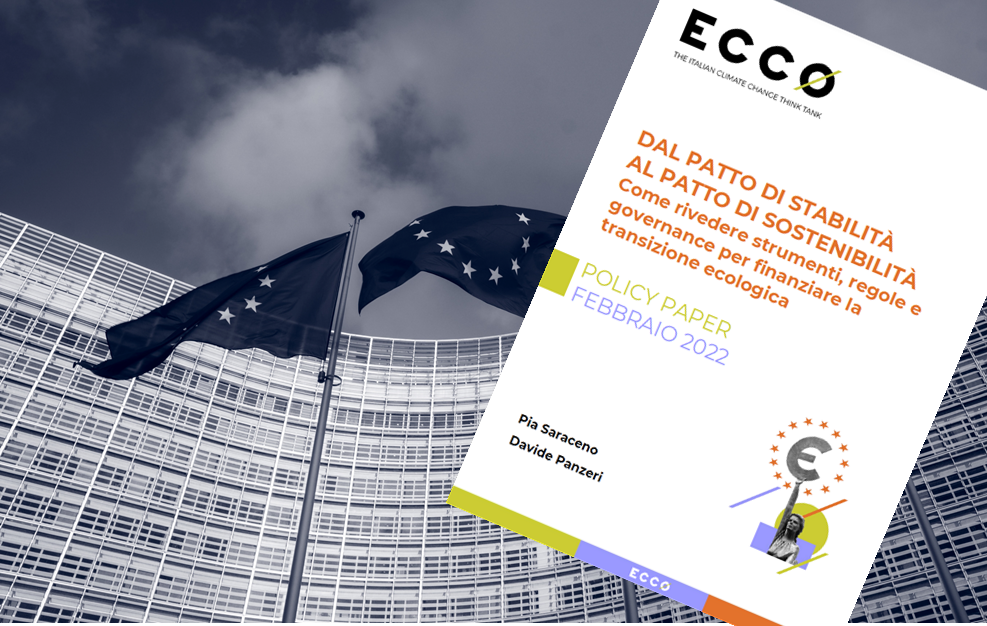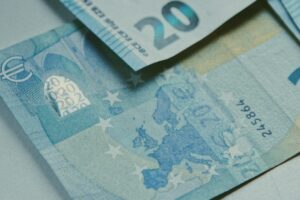With the publication of the policy paper ‘From the Stability Pact to the Sustainability Pact’, ECCO aims to contribute to ensuring that Europe, as part of the revision of the Stability and Growth Pact, guarantees adequate resources to support climate action.
Read the full report here.
Defining what can be considered ‘debt for climate action’ provides an example of good debt, as opposed to the so-called bad debt, being excessively exposed to which is not in line with the European pact.
Various contributions emerge from the paper by Pia Saraceno.
- First of all, public spending on climate is in many cases inaccurately considered to be debt. This is because the macroeconomic models used by the European Commission do not include the cost of the risks of climate change and the positive role that mitigation would have in reducing them.
- The European Central Bank (ECB) already plans to revise its models to better include climate variables. But until this happens, it’s necessary to allocate a special role to public spending on climate needs, in order to create headroom for countries to take action on decarbonisation.
- Public spending on climate goes beyond the principle of the green golden rule, and can be divided into three main areas:
- Support for investment, mainly productive, in order to innovate processes and leverage private investment, reducing innovation-related risks for business in an economic context subject to the radical change of the climate transition.
- Initiatives supporting the demand for products and services compatible with the decarbonisation. Without intervention, the high costs of these technologies would be unlikely to allow a shift of consumption towards pathways compatible with climate neutrality within the required timeframes. Such spending would make it possible to accelerate the return on productive investments and to manage the social sustainability of the transition.
- Spending related to mitigating the impacts on the vulnerable segments of society of the climate transition. Such spending would make it possible to achieve a just transition, which is necessary from the point of view of social equity and a prerequisite for the success of the transition itself.
- Ensuring an increased availability of debt to fund the climate transition does not reduce the importance of fiscal policy, which must remain in line with the overall decarbonisation framework. However the levels of investment required and risks connected with innovation mean it is impossible to expect to secure the resources required to fund the transition through fiscal policy alone.
- Finally, creating a preferential pathway for green debt requires the introduction of strict conditionalities capable of ensuring that such spending is in line with climate goals and debt sustainability. This requires a compliance and governance system in order to monitor the pathways, guarantee the necessary tools and clarify the ownership of actions.
In the coming months, the debate on the revision of the stability pact will become central among member states in Europe. With a debt-to-GDP ratio of 155.6% in 2020, Italy is undoubtedly under special surveillance.
To date the various options on the table are still very weak when it comes to viewing climate action as a separate and privileged area of the debate around debt. Yet its various component parts mean green debt can be classified as good debt, and this is an area where the discussion between countries could find a common ground.
Climate action is in itself collective action, and the efforts of the more virtuous countries would be for nothing unless they are matched by efforts from the countries with higher debt exposure. Taking collective action on climate by strengthening the European internal market is a shared objective that should emerge during 2022 in order to conciliate the demands of frugal countries with the need of the most indebted countries to fund the transition.
Read the full report here.
For more information on the use of contents or press requests, please write to comunicazione@eccoclimate.org
Photo by Christian Lue on Unsplash






